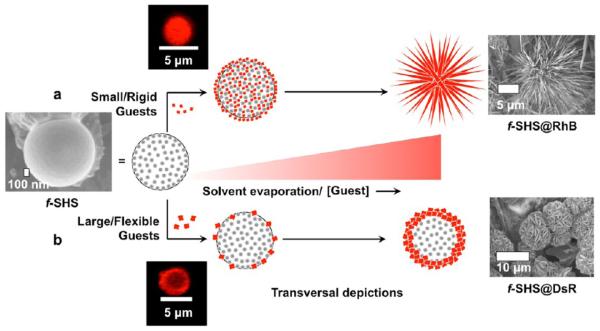Figure 5.
Mechanistic hypothesis for the formation of organic NFs from the f-SHS@Guest complexes: (a) For small/rigid guests like RhB, the guest diffuses throughout the porous f-SHS by osmotic gradient until it fills the gel-like interior. Upon removing the solvent (e.g., 36 or 65 °C), the concentration of guest increases, which lead to enhanced noncovalent interactions resulting in the spiky NFs from f-SHS@RhB. This seems to promote a crystallization growth perpendicular to the particle’s surface leading to the formation of spiky-petalled NFs. (b) Larger or more flexible guests like DsR are concentrated on or near the surface of the f-SHS favoring the formation of the wide-petalled NF surface in f-SHS@DsR.

